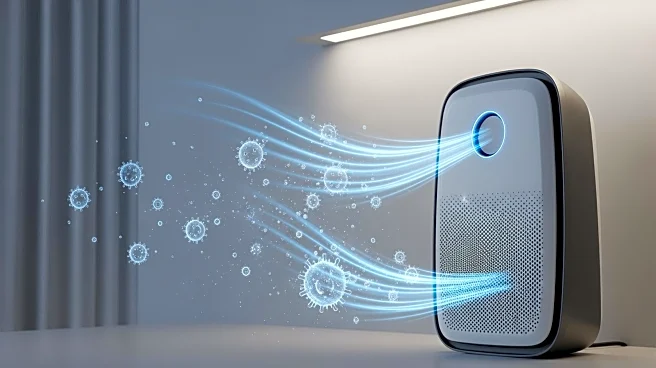What's Happening?
Researchers at UBC Okanagan have developed a new air-cleaning device aimed at capturing airborne pathogens to reduce the spread of respiratory illnesses in enclosed settings. The device, part of a study
led by Dr. Sunny Li and Dr. Mojtaba Zabihi, employs an induction-removal or jet-sink airflow approach. This method captures exhaled aerosols before they can spread throughout a room. Traditional ventilation systems often rely on fast-moving air streams, which can be uncomfortable and less effective if a person moves. The new design, however, guides airflow around the user and continuously draws contaminated particles into a localized purification area. Computer simulations showed that the device significantly reduced the risk of infection, lowering it to 9.5% compared to 47.6% with typical personal setups. The system removed up to 94% of airborne pathogens, demonstrating its potential for use in spaces like clinics, classrooms, and offices.
Why It's Important?
The development of this new airflow device is significant as it addresses the limitations of current ventilation systems, which are crucial for mitigating the transmission of airborne diseases, especially in shared environments. With many people spending a significant amount of time indoors, ensuring high air quality is vital for health and well-being. The device's ability to reduce exposure risk by capturing pathogens before they spread could lead to safer indoor environments, particularly in settings where close contact is unavoidable. This innovation could influence future ventilation guidelines and contribute to public health by reducing the spread of respiratory illnesses.
What's Next?
The research team plans to refine the system for use in larger rooms and test physical prototypes in clinical and public environments. As part of Canada's National Model Codes Committee on Indoor Environment, Dr. Zabihi hopes the research will inform future ventilation guidelines. The successful implementation of this device could lead to widespread adoption in various indoor settings, enhancing air quality and safety. Further development and testing will determine its scalability and effectiveness in diverse environments.













